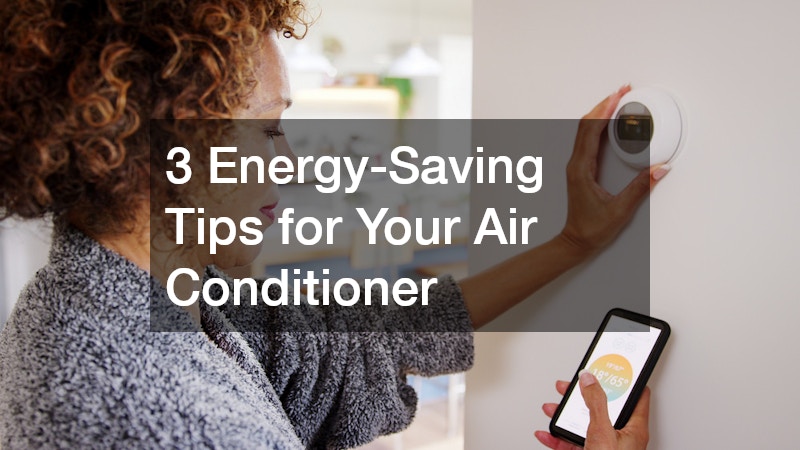Your air conditioner can be both a comfort essential and a significant contributor to your electricity bill. As Australian summers continue to bring record-breaking heat, more households are relying on their cooling systems for relief. However, without careful use and maintenance, air conditioners can consume a large amount of energy, driving up costs and increasing your environmental footprint.
Fortunately, with a few simple changes, you can enjoy a cooler home while keeping your energy usage under control. These energy-saving tips are practical, cost-effective and suitable for both split systems and ducted units.
Tip 1: Optimise Your Settings and Usage Habits
Many Australians use their air conditioner without giving much thought to how it’s set up or operated. Yet, small adjustments can make a big difference. The first step is to set your temperature wisely. A setting between 24 and 26 degrees Celsius is generally recommended for summer. Every degree lower than 24 can increase your energy consumption by around 5 to 10 per cent, so sticking within this range helps balance comfort and efficiency.
Another key habit is turning your system off when not in use. It sounds simple, but leaving it running all day—even in unoccupied rooms—can quickly rack up energy costs. Use timers or smart thermostats if available, allowing you to automate operation based on your daily routine. Some modern air conditioners also come with eco modes that adjust output while maintaining a stable room temperature.
Keeping windows and doors closed while the unit is operating is essential. When cool air escapes or hot air enters, the system has to work harder to maintain the desired temperature. Consider using ceiling fans to support your air conditioner as well. Fans circulate the cooled air more efficiently, helping you feel comfortable at a slightly higher thermostat setting.
Tip 2: Maintain Your System Regularly
Just like any appliance, an air conditioner performs best when it’s well-maintained. Dust and debris can build up inside filters and vents, restricting airflow and making the system work harder than necessary. Dirty filters not only reduce efficiency but can also affect air quality, triggering allergies and respiratory issues.
Cleaning or replacing filters is a simple yet crucial task. For most units, filters should be cleaned every two to four weeks during periods of heavy use. Some models have washable filters, while others require replacements. Your user manual will provide specific instructions based on your system type.
Outdoor units also need attention. Make sure the exterior condenser is free from obstructions such as leaves, grass or dirt. Proper airflow around the unit ensures it can release heat effectively and operate at its best. It’s also worth scheduling professional servicing once a year to check refrigerant levels, electrical components and system pressure. This preventative maintenance helps identify small issues before they become costly problems.
If your air conditioner is over ten years old and constantly struggling to cool your space, it might be worth considering an upgrade. Newer models are designed with higher energy efficiency in mind and often come with better features for temperature control and smart operation.
Tip 3: Improve Your Home’s Insulation and Layout
Energy efficiency doesn’t stop at the unit itself. Your home’s structure and insulation play a significant role in how effectively your air conditioner can cool the space. Poorly insulated homes allow heat to enter during the day and escape at night, forcing your system to work overtime to maintain a steady temperature.
Start by checking your windows and doors for air leaks. Simple measures like weather stripping, door snakes and double-glazed windows can significantly reduce heat transfer. If your home has large glass areas, using curtains or blinds during peak sun hours can block radiant heat and help keep indoor temperatures stable.
Ceiling and wall insulation are long-term investments that can cut cooling and heating costs by up to 40 per cent. Proper insulation helps maintain a consistent internal climate, which means your air conditioner doesn’t have to work as hard or as often. Reflective roof coatings and ventilated roof cavities also assist in minimising indoor heat build-up.
The way you arrange your living space can also affect airflow. Avoid placing furniture directly in front of vents or blocking return air grilles. Doing so restricts circulation and forces your unit to work harder to cool the space evenly. Ensuring open pathways for airflow allows for quicker and more efficient temperature adjustments.
Smart Cooling Starts with Smarter Habits
Your air conditioner doesn’t have to be a financial or environmental burden. By adopting smarter habits, maintaining your system properly and improving your home’s thermal efficiency, you can stay cool while reducing energy consumption. These three tips—optimising settings, regular maintenance and enhancing insulation—are practical steps that every household can implement without major cost or effort.
Australia’s climate makes air conditioning a necessity for many, but that doesn’t mean it has to come with high power bills. Whether you’re running a small split system or a full-home ducted setup, mindful use of your air conditioner can lead to noticeable savings and improved comfort. Make the changes today and enjoy a cooler, more efficient tomorrow.

